EPDS III: Enhancing worm control in sheep
| Project start date: | 03 January 2024 |
| Project end date: | 31 October 2028 |
| Project status: | In progress |
| Relevant regions: | Southern Australia, Western Australia, Victoria, Eastern Australia |
| Site location: | VIC: Bairnsdale |
Summary
Sheep producers in East Gippsland face persistent challenges with worm control due to the region’s evenly distributed rainfall and increasingly variable climate. While some areas like the Tambo Valley benefit from hot, dry summers that suppress worm populations, wetter conditions, especially in summer, can trigger sudden outbreaks, particularly of the Barbers Pole worm. This species thrives in East Gippsland’s climate, and many producers lack experience in managing it effectively. Compounding the issue is growing drench resistance, which limits treatment options and threatens flock health and productivity.
To address these concerns, a coordinated PDS project led by the Bairnsdale BestWool BestLamb group, with support from Agriculture Victoria, will establish three demonstration farms across East Gippsland. These farms will showcase best-practice worm control strategies tailored to local conditions. Through annual workshops, hands-on testing, and the development of individual worm management plans, the project aims to boost producer knowledge, confidence, and resilience. By disseminating results through field visits, media, and extension activities, the initiative seeks to reduce worm-related losses and safeguard the long-term viability of sheep enterprises across the region.
Objectives
Aim:
The project will aim to increase the knowledge around best practice worm management to reduce the impact on individual sheep enterprises and the industry in East Gippsland as a whole.
Objectives:
- Use three demonstration farms in three different localities in East Gippsland to demonstrate best practice worm control in sheep.
- Run at least 1 workshop in each of the three demonstration areas each year on grazing management, breeding, drench resistance testing and other tools that will help reduce worm impacts. This information will then be used by participants to develop their own worm management plans that will be reviewed in the final year.
- Have 100% of core members and 60% of observer members with improved knowledge, skills and confidence in sheep worm management on their property including the management of drench resistance.
- Widely disseminate the PDS results and learnings through targeted extension activities such as visits to the demonstration farms at key times for discussion, workshops and media.


